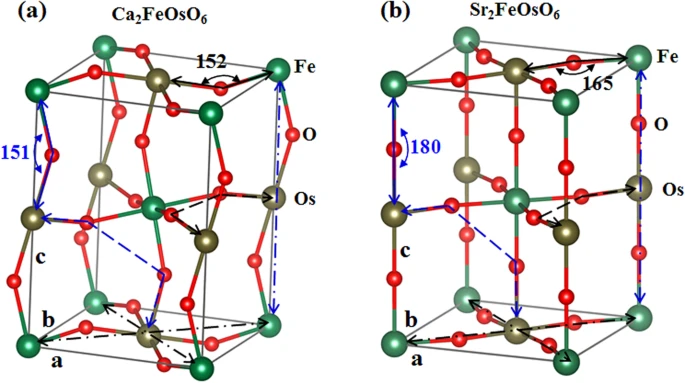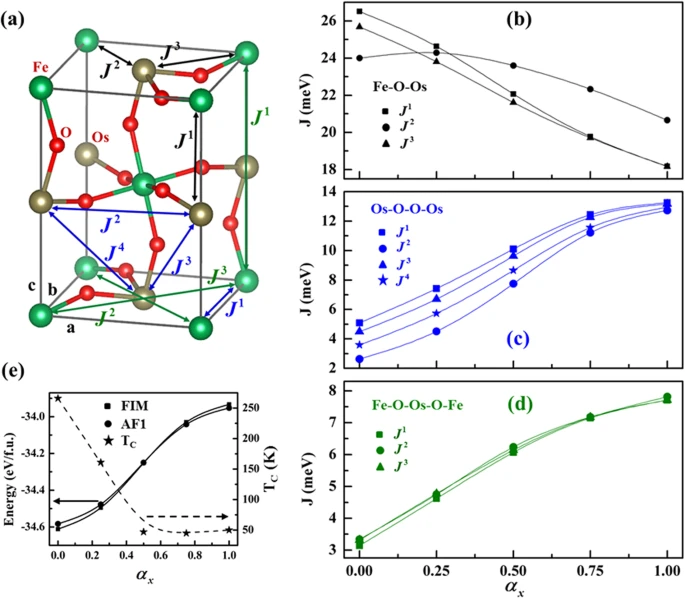Lattice-distortion Induced Magnetic Transition from Low-temperature Antiferromagnetism to High-temperature Ferrimagnetism in Double Perovskites A2FeOsO6 (A = Ca, Sr)
Abstract
High-temperature insulating ferrimagnetism is investigated in order to further reveal its physical mechanisms, as well as identify potentially important scientific and practical applications relative to spintronics. For example, double perovskites such as Sr2FeOsO6 and Ca2FeOsO6 are shown to have puzzling magnetic properties. The former is a low-temperature antiferromagnet while the latter is a high-temperature insulating ferrimagnet. In order to understand the underlying mechanisms, we have investigated the frustrated magnetism of A2FeOsO6 by employing density functional theory and maximally-localized Wannier functions. We find lattice distortion enhances the antiferromagnetic nearest-neighboring Fe-O-Os interaction, however weakens the antiferromagnetic interactions via the Os-O-O-Os and Fe-O-Os-O-Fe paths, so is therefore responsible for the magnetic transition from the low-temperature antiferromagnetism to the high-temperature ferrimagnetism as the decrease of the A2+ ion radii. Also discussed is the 5d3-3d5 superexchange. We propose that such superexchange is intrinsically antiferromagnetic instead of ferromagnetic as previously thought. Our work clearly illustrates the magnetic frustration can be effectively relieved by lattice distortion, thus paving the way for tuning of complex magnetism in yet other 3d–5d (4d) double perovskites.







No comments